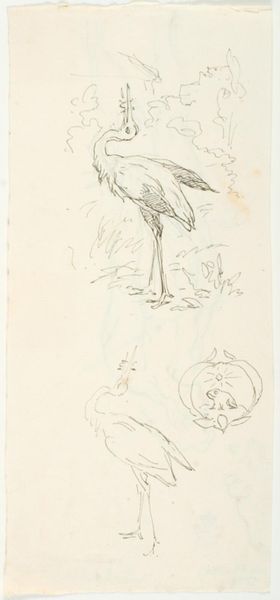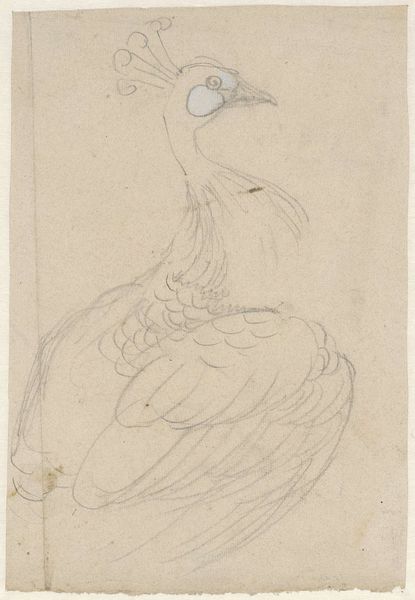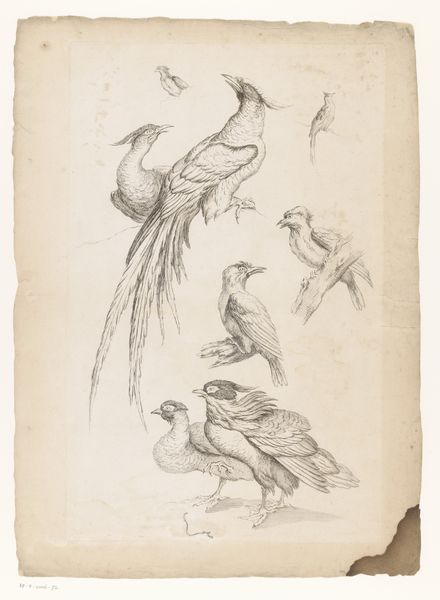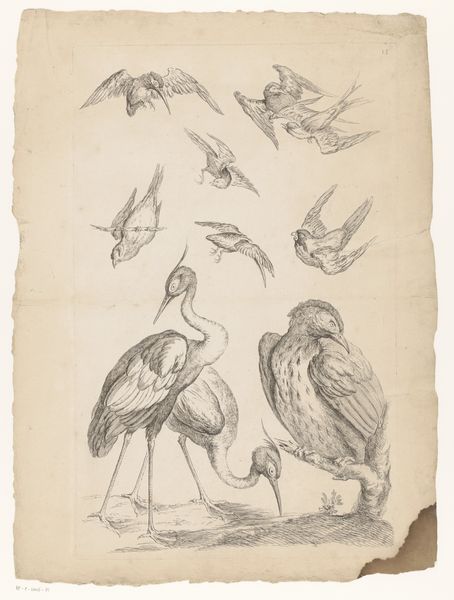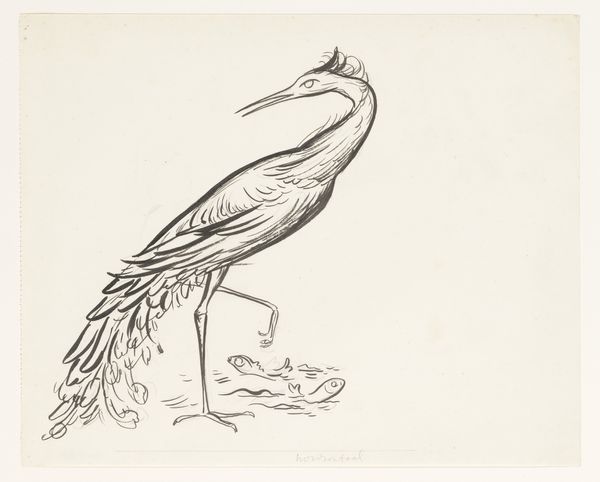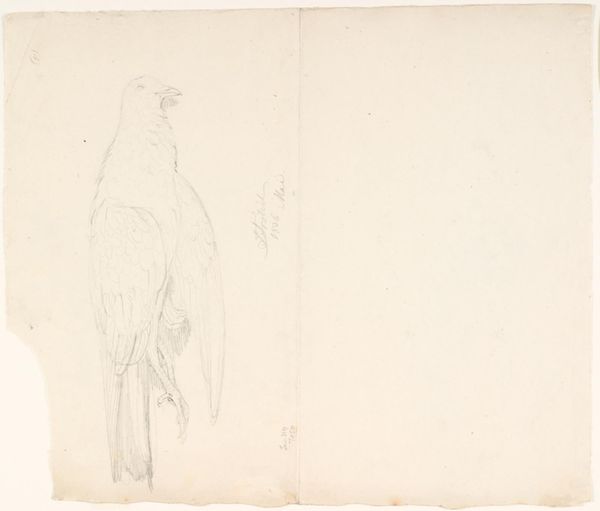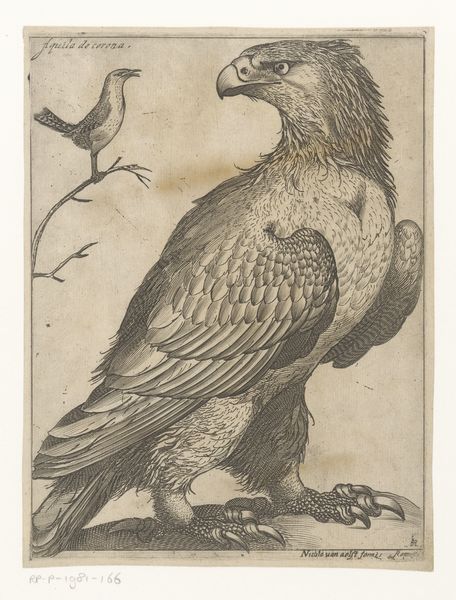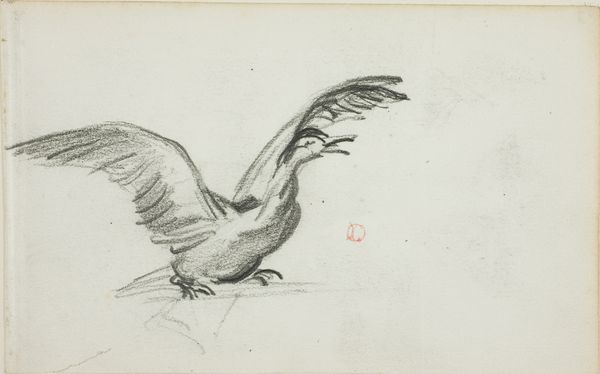
drawing, pencil
#
drawing
#
pencil sketch
#
landscape
#
figuration
#
pencil drawing
#
pencil
Dimensions: 120 mm (height) x 171 mm (width) (bladmaal)
Curator: Ah, "Udstoppet fugl," or "Stuffed Bird," a pencil drawing from 1905 by Theodor Philipsen. It resides here at the SMK, Statens Museum for Kunst. What are your immediate thoughts? Editor: Somber, muted, and a little lifeless. The gray hues lend it a somewhat melancholic quality. The lack of color emphasizes form and contour, creating a stark, almost skeletal representation of the bird. Curator: Philipsen, deeply engaged with the natural world and rural life, used drawing as a crucial means for studying subjects that would eventually make their way into his larger oil paintings. These studies often involved readily available materials—paper, pencils—reflecting a direct, almost utilitarian approach to his art making. Editor: The composition is interesting. The bird is centrally located but slightly asymmetrical. Notice how the lines give a sense of depth despite being a sketch? It’s almost sculptural, as if Philipsen were trying to capture the weight and mass of the subject. Curator: Right, and the presence of the taxidermied subject speaks to a complicated relationship with nature itself, which was transforming rapidly at the time. The very act of stuffing this bird highlights a human desire to control and preserve nature—a kind of early environmental anxiety, perhaps? Editor: It's a clever visual paradox. The stiffness is apparent in its posture and feathers, yet the delicate rendering hints at life, if only a preserved echo. Curator: The existence of this sketch raises so many questions about process, too. Was this drawn from direct observation, or from memory? What kind of social function did these sketches hold, if any, during Philipsen's career? Editor: Beyond its place within Philipsen's practice, the pencil medium underscores its inherent qualities. The texture, the grain, even the smudging contribute to the work's raw expressiveness. These physical properties, though simple, greatly influence its mood. Curator: Indeed, by observing these choices Philipsen made about representing the bird in front of him, it also invites a lot of open reflection on his place and the function of the artist's studio, which is something that often gets left unexamined by the audience. Editor: Well, exploring this understated study has revealed far more layers than I initially suspected. Its simplicity belies a rich meditation on form, medium, and material, all wrapped in a quiet contemplation of life and death. Curator: Absolutely. Sometimes it is the more minor works, with simpler choices made on the part of the artist, that expose grander patterns within their whole catalog of artmaking.
Comments
No comments
Be the first to comment and join the conversation on the ultimate creative platform.

